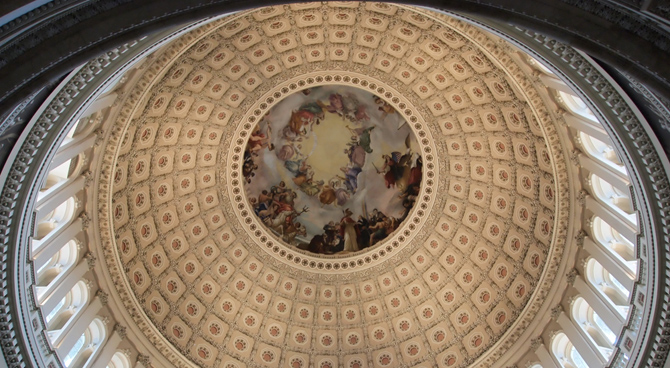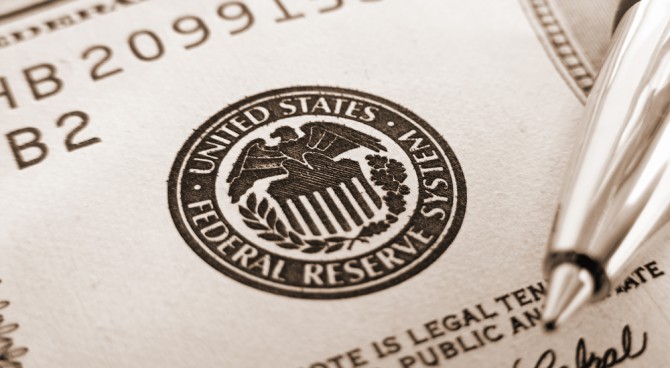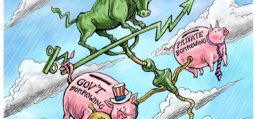As rates rise, paying back government borrowing will consume the credit needed to sustain growth.
By Phil Gramm and Michael Solon
Dec. 10, 2018 6:54 pm ET
The same driving forces have propelled every strong American economic recovery since World War II: a sustained rise in business investment and increases in new-home building. The resulting increases in the demand for credit have driven up interest rates. As the current recovery builds and extraordinarily low interest rates normalize, the economy will begin to feel for the first time the effects of the unparalleled borrowing of the past decade. Exploding debt-servicing costs and the new federal borrowing could crowd out private borrowing at levels never before experienced in any of the 10 previous postwar recovers.
During the weak Obama recovery, business investment lagged behind the norm, and new-home construction remained at the recessionary level. Today business investment is at the highest level in a decade, and housing starts are up 42% from the average level of the Obama era. With the economy now growing at the average postwar rate of 3.5%, interest rates also should be expected to rise toward their postwar norms as government and the private sector compete for available credit.
Nominal interest rates in the postwar period were highly affected by inflation, which rose at an annual rate of 3.8% from 1948-2008. Interest rates surged when inflation approached double-digit levels from 1977-82, and Treasury borrowing costs reached their highest postwar levels, averaging 10.6%. If that six-year period is set aside as an anomaly, the Treasury’s average borrowing cost from 1948-2009 was 4.8%. For the entire 1948-2008 period, real Treasury borrowing costs—the nominal borrowing costs minus the inflation rate—were 1.2%.
This suggests that if the Fed could meet its 2% inflation target during this recovery, Treasury borrowing costs might stay close to the 3.2% range. But because interest on 10-year Treasurys is already above 3%, it may be optimistic to assume that the Fed could hold rates at this level during another five years of strong recovery even if inflation stays around 2%.
If the economy continues to grow at the normal postwar rate, growth-driven federal revenues will overwhelm the costs of the tax cut, paying for virtually all of its originally projected 10-year revenue losses in just five years. But if Treasury borrowing cost normalizes to 3.2% over the next five years, the cost of servicing the federal debt will more than double, from $316 billion this year to $666 billion in 2023.
If borrowing costs rose to 4.8% over the next five years, federal debt-servicing costs would more than triple, reaching $1.1 trillion in 2023. In that scenario, the cost of servicing the $7.5 trillion increase in the public debt incurred during the 2009-16 period alone would cost $362 billion—more than the current cost of servicing the entire federal debt.
Even with the strong revenue gains that would come from sustained 3.5% growth, a 4.8% average borrowing cost by 2023 would force the Treasury to borrow $1.3 trillion, 5.2% of gross domestic product. If the Fed could hold inflation rates in the 2% range and Treasury borrowing costs only grew to 3.2%, total federal borrowing by 2023 would still be $985 billion, 3.7% of GDP.
Federal borrowing levels between 3.7% and 5.2% of GDP annually would be quite similar to the Obama-era average of 4.6%. But 40% of that era’s unprecedented new borrowing was offset by the Fed’s purchases of Treasury debt and mortgage-backed securities. Also, in the failed recovery, the economy had little pulse and never felt the fever of high interest rates that would have come from such massive federal borrowing if private demand for loanable funds had matched the levels experienced in other postwar recoveries.
In postwar America before 2009, gross private domestic investment averaged 17.5% of GDP while federal borrowing absorbed only 1.6% of GDP (including the high-deficit Reagan presidency, when federal borrowing averaged 1.8% of GDP). By comparison, Congressional Budget Office projections of federal outlays plus normalized rates would produce Treasury borrowing by 2023 that could pre-empt 3.5 times the amount of credit as a percentage of GDP that federal borrowing pre-empted on average during other strong postwar recoveries.
With an already bloated balance sheet and banks holding huge levels of excess reserves, the Fed would risk spiking inflation if it tried to hold interest rates below the level dictated by public and private demand for capital. But even in a divided government, where compromise and legislative success will be difficult, the Trump administration can act unilaterally to soften the headwinds of rising interest rates that will threaten the recovery.
Every dollar the federal government doesn’t spend is a dollar it doesn’t have to borrow. The caps on discretionary spending should not be lifted in 2019, and any new spending program should require a real spending offset. An acceleration of the administration’s deregulatory effort, especially in the financial sector, would enhance efficiency, expand growth and reduce federal borrowing.
Strong economic growth and rising interest rates will attract foreign capital, which can help prevent a surge in interest rates that could derail the recovery, but foreign capital will come at a cost of higher trade deficits. President Trump is obligated to make China live up to its World Trade Organization commitments and end the piracy of American technology. But fighting a trade war and maintaining a strong recovery may be mutually exclusive objectives. To ensure the U.S. has sufficient capital resources to sustain the recovery, the president needs to cut his deal with China. It’s time to make peace on trade and wage war on the deficit.
Mr. Gramm, a former chairman of the Senate Banking Committee, is a visiting scholar at the American Enterprise Institute. Mr. Solon is a partner at US Policy Metrics. This article is adapted from a paper with Thomas R. Saving to be published by the Cato Institute next year.
Appeared in the December 11, 2018, print edition.





